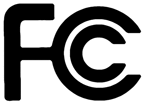 Most electronic devices destined for sale in the U.S. fall under Part 15 (CFR 47) of the Federal Communications Commission (FCC) rules for limits to the unintentional and intentional emission of radiation. However, there are some exemptions that you may be able to take advantage of, depending on the nature of your product. You can find the bulk of this information in Section 15.103 of the rules.
Most electronic devices destined for sale in the U.S. fall under Part 15 (CFR 47) of the Federal Communications Commission (FCC) rules for limits to the unintentional and intentional emission of radiation. However, there are some exemptions that you may be able to take advantage of, depending on the nature of your product. You can find the bulk of this information in Section 15.103 of the rules.
The FCC says it is “strongly recommended” that you still attempt to comply with the rules, regardless of your product type. They have the power to halt sales of your device if the device has been found to cause harmful interference, so proceed with caution.
Here is a simplified description of product types that are FCC exempt from digital emissions testing:
- A digital device utilized exclusively in any transportation vehicle including motor vehicles and aircraft. Note: wireless devices are subject to other FCC rules.
- A digital device used exclusively as an electronic control or power system utilized by a public utility or in an industrial plant.
- A digital device used exclusively as industrial, commercial, or medical test equipment.
- A digital device utilized exclusively in an appliance, e.g., microwave oven, dishwasher, clothes dryer, air conditioner, etc.
- Specialized medical digital devices (generally used under the supervision of a licensed health care practitioner) whether used in a patient’s home or a health care facility.
- Digital devices that have a power consumption not exceeding 6 nW.
- Joystick controllers or similar devices, such as a mouse, used with digital devices but which contain only non-digital circuitry or a simple circuit to convert the signal to the format required (e.g., an integrated circuit for analog to digital conversion).
- Digital devices in which both the highest frequency generated and the highest frequency used are less than 1.705 MHz and which do not operate from the AC power lines. Digital devices that include battery eliminators, AC adaptors or battery chargers which permit operation while charging or that connect to the AC power lines indirectly do not fall under this exemption.
Although not noted in section 15.103, equipment authorization is also not required for:
- Personal use home-built devices (not kit-constructed) that are assembled in quantities of five or less
- Low-frequency devices that don’t generate timing signals or pulses at a rate in excess of 9,000 pulses (cycles) per second (i.e., 9 kHz)
Note that equipment is not exempt unless all of the devices in the equipment meet the criteria for exemption. For example, if you have a specialized medical digital device with a wireless transmitter, the wireless transmitter still has to be tested.
Please confirm with MET Labs whether you are indeed exempt as there are some caveats to this information.
And, of course, FCC-exempt devices might be required to undergo other types of testing, like product safety certification for U.S. OSHA compliance or EMC testing for CE marking in Europe. Contact MET for a full evaluation of your product line and its intended markets.



